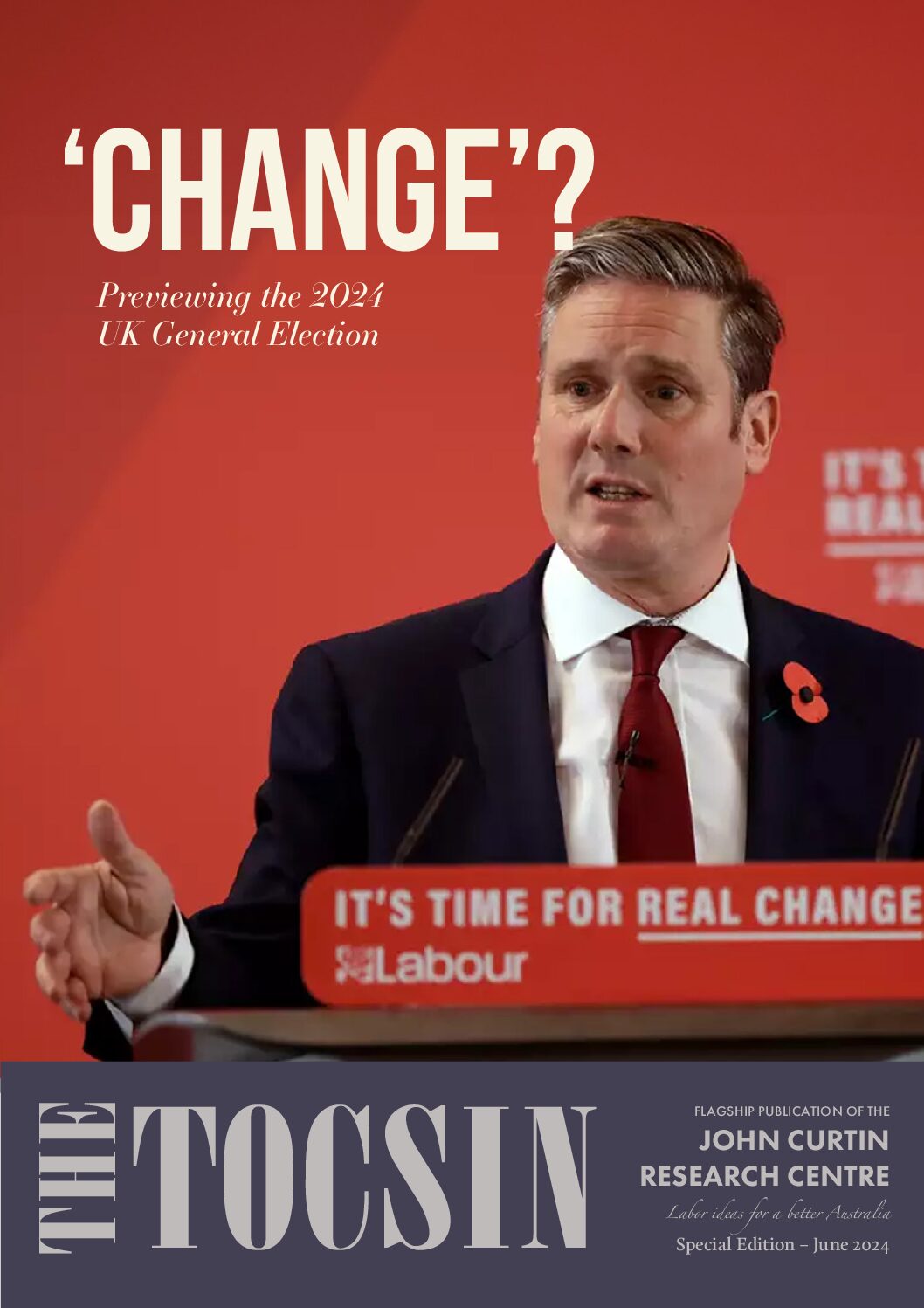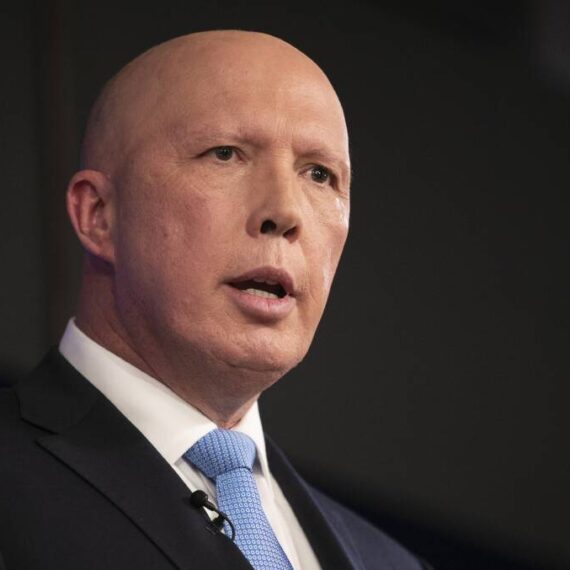On 19 April, Sydney’s Lowy Institute launched its third annual report on Being Chinese in Australia surveying current views and experiences of ‘Chinese Australians.’ Are there lessons for political parties here?
Several upbeat findings emerge from the report, bearing on reduced experiences of racism among respondents and warming sentiment towards Australia, a deeper sense of belonging, and positive views about Australia’s role in the world. Lowy highlights these findings in its promotional material.
Less reassuring were other findings that mainstream media chose to focus on, related to Australia’s national security and international relations, and to the sizeable proportion of those polled who pro/fessed a stronger sense of belonging toward China rather than Australia. Just over a quarter (27%) of respondents thought the AUKUS trilateral alliance made Australia safer, compared with over half (52%) of the general population. On ‘foreign interference’ more respondents were concerned about influence on Australia’s political processes from the US (62%) than from China (54%). Further, just two thirds (64%) of respondents identify as Australians at all, while one third identify as Chinese and almost one in five (18%) feel a strong sense of belonging to China.
The report left many Chinese Australians scratching their heads. Who are Chinese Australians? Who was consulted for the poll? What were they asked exactly?
The online report stumbles on its opening page where the headline statement reads that 45% of Chinese-Australians were born in China and 15% in Australia. This contradicts published ABS 2021 data and inflates the China-born segment by almost a fifth while halving the proportion of Australian born. The headline claim fails to point out that its numbers are based on the survey sample, adjusted for age, not ABS totals for people identifying as of Chinese ancestry. Baldly stated, the opening statement is incorrect.
According to 2021 national census data there are 1.4 million people in Australia who identify as having Chinese ancestry, of whom about 400,000 were born in Australia and one million born overseas. Of the overseas-born, 536,000 were born in the People’s Republic of China and the remainder born elsewhere, including Taiwan and Southeast Asia. Relatively speaking, China-born make up 38 per cent (not 45 per cent) of the 1.4 million total, those born in Australia 29 per cent (not 15 per cent) and people born elsewhere make up 33 per cent.
Who responded to the survey? The report rests on online responses from 1,200 self-selecting adults, recruited through social media platforms, and weighted against a basket of demographic parameters based on 2021 census data around age, education, gender, language spoken, country of birth, and state or territory of residence. Visa status is not factored in beyond requiring respondents to have been in Australia for 12 months. All are classified as Chinese Australian for the purpose of the report.
Readers can sympathise with the difficulties entailed in surveying large, diverse and dispersed communities. Online self-selection is especially fraught. All credit to the Lowy Institute team for persistence.
Classification of findings also presents challenges. The views and experiences of visiting students and residents on limited-term working visas, for example, are worth surveying on several counts, not least because Australia’s universities and work places would be hard pressed to get by without them. Their experiences of racial discrimination should be surveyed along with their sense of whether their schools or employers are treating them fairly and how services could be improved on their behalf. But it’s a stretch classifying their views as those of Chinese Australians.
Properly speaking, Chinese Australian refers to Australians of Chinese descent, which is to say citizens and self-identifying Australians who claim Chinese ancestry. Modifying the definition of a familiar term for the purpose of a survey confuses the communities concerned and, judging from online responses to mainstream media reports, bamboozles the public.
Visa and citizenship status are not weighted. The report offers a one-page pie chart on visa/citizenship status of all respondents, indicating that 21 per cent were on limited-term student, worker and other visas, and that 56 per cent were Australian nationals – that is, people self-identifying as ethnically Chinese and possessing Australian citizenship. The remainder were permanent residents. It follows that the percentage reported as identifying as Australian (64%) exceeds the number of citizens among respondents. In this respect multicultural Australia appears to be doing what it does best in embracing would-be citizens, as well as Australian nationals, as self-identifying Australians.
And what of the questions? These are classified into several clusters dealing with way of life, belonging, media, trust, foreign policy, foreign interference, and relations with China and the US, all important issues on which Chinese Australians and residents should be consulted.
Problems with the classification of respondents as Chinese Australians emerges most clearly in questions of identity and belonging, where just 41 per cent of Chinese Australians identify as Chinese Australian. Overall, 64 per cent identify as Australian in one form or another (Chinese Australian, Australian Chinese, and Australian) and 32% as Chinese. 18 per cent report a strong sense of belonging to China.
As a rule of thumb, belonging correlates closely with citizenship and to some degree with permanent residence. Among expatriates the world over, temporary residents live in one place while maintaining their identity in another. In all probability, most of the residents who don’t identify in any way as Australian, or say they feel they belong to China, are citizens of China and plan to stay that way. But as the findings are not broken down by visa or citizenship category, readers are left pondering why international students and other temporary residents from China should be included in the category of Chinese Australians in the first place.
The sixth line of questioning, relating to ‘Foreign Interference,’ raises a different set of concerns. Several questions under this head ask respondents to estimate the degree of attention paid to foreign interference by journalists, politicians and the public. These aren’t the questions that made their way into newspaper headlines. One widely-quoted headline read that Chinese Australians were more concerned about ‘foreign interference’ from the US than from China.
This claim is not born out by survey results which show more respondents concerned about foreign ‘influence’ emanating from the US than from China. Respondents were not asked to weigh their concerns about interference from one country or the other. Again, this is a problem of classification: reasonable questions probing responses to foreign influence are classified and reported in the survey under the misleading heading of foreign interference.
Distinguishing between foreign influence and interference may not matter in some countries but it is important in Australian public life. The first is welcomed, the second outlawed. The Department of Home Affairs frames the distinction this way:
Australia is not concerned with foreign influence activity that is open and transparent and that respects our people, society and systems… Foreign interference occurs when activity carried out by, or on behalf of, a foreign power, is coercive, corrupting, deceptive or clandestine, and contrary to Australia’s sovereignty, values and national interests.
As the survey fails to highlight the distinction between these two terms, and places them together under the heading of Foreign Interference, newspaper headlines are true to the report and at the same time highly misleading.
Responding to criticisms of the report that I raised in an 800-word Opinion piece in The Australian, Lowy authors correct a careless error on my part to the effect that that one third of respondents identified with China. I appreciate the correction. That mistake was made in the course of reducing to 800 words a 2,500 word article that did not refer to one third identifying with China, as the authors would know from the longer draft I shared with them ahead of publication.
We disagree on the nature of the problem all the same. They ‘respectfully disagree’ with a view they attribute to me that the survey should be limited to people ‘of Chinese ancestry who are Australian citizens,’ and then proceed to explain why they disagree, at length. This is puzzling at best as no such view was expressed by me in either the published opinion piece or the longer version. The point at issue is not who should be surveyed but who should be classified as Chinese Australian in survey analysis and reporting.
All categories of residents claiming Chinese ancestry should be surveyed, including temporary workers and international students. The survey needs to be as wide as possible to capture experiences of racial abuse and other issues bearing on the comfort and well-being of visitors and residents. Our disagreement is not over who should be surveyed but how survey responses should be classified.
In this case, everyone sampled is classified as Chinese Australian. In their defence, the authors say they were simply following the practice of the ABS 2021 census data collection. This may be true for data collection but does not hold for data classification. To the best of my knowledge, the term Chinese Australian is not found in formal census reports classifying all residents in Australia claiming Chinese ancestry. Again, I would be happy to be corrected.
Chinese Australians is an everyday term referring to Australians claiming Chinese heritage. It is not confined to citizens, as I point out in my earlier published commentary, as it includes both citizens and self-identifying Australians claiming Chinese ancestry, who together far exceed those with citizenship. As a rule, the term does not apply to international students although exceptions could be made for students from China who explicitly identify as Australian. My point is that analysis and reporting should clearly distinguish between different cohorts, and that the term Chinese Australians should be used selectively.
Further, it is disingenuous for the authors to claim in their response that they cannot control how others report their polling when their classifications are misleading on such basic terms as Chinese Australian, foreign influence, and foreign interference. Adjusting names to match the order of things (zhengming), the Chinese classics tell us, brings order to the world. Some zhengming is in order here.
What prompted me to comment publicly on flaws in the survey design in its third year was not just the community alarm generated by media reporting but a sense that some of the reported survey results could prompt mainstream political parties into factoring the findings into their electoral strategies. On one level that would be unfair to the research team which had no intention of feeding their findings into electoral politics at state of federal levels. Still, the temptation is understandable. It’s a small step from popular media talking up a report of this kind and then political parties and factions taking the report’s findings into account in their internal debates and election number-crunching. The Lowy report did not emerge in a vacuum.
In April, the federal government captured a seat from the opposition at a by-election in the Victorian seat of Aston for the first time in a century, and the ABC attributed that historic outcome to the substantial presence of Chinese Australians who make up around one in seven of the electorate’s population. In the NSW state elections held a month earlier, according to The Australian, the governing Liberals saw a 9.3 percent slump in their primary vote in the 10 seats with the largest Chinese-heritage populations, double the swing state-wide.
Assuming these reports are accurate, Chinese-Australian voters were signalling widespread disaffection with the Liberal Party and coalition governments around the time the Lowy report appeared. Not surprisingly, this confluence of events and reporting encouraged political speculation across the spectrum, arguably spooking Liberals who are trying to plot their way back into office, dividing Greens concerned about human rights abuses in Xinjiang and Tibet from their pro-China anti-America colleagues, and possibly nourishing complacency in Labor about its ability to balance multi-cultural, trade, and security policies.
Chinese Australians are clearly sending a message but what message? Is it about foreign and defence policy? About international trade and commerce? Anxiety over racial profiling and discrimination? Could it be a combination of those factors? If so in what blend exactly and in what order of priority?
In my judgement, political parties should set the Lowy report aside in considering these questions. For a start, no more than 56 per cent of the Lowy sample is eligible to vote in state and federal elections, as citizens. The report makes no effort to correlate respondents’ view on policy matters with citizenship, i.e. with capacity to influence these matters through the ballot box.
Further, while China-born residents make up almost half of the Lowy sample, they make up a relatively small segment of Chinese-Australian voters. Australian Bureau of Statistics 2021 data show that just 227,000 China-born residents are citizens (out of the 1.4 million people claiming Chinese ancestry) among whom perhaps 200,000 are of voting age. So survey findings heavily favouring China-born respondents cannot be correlated with Chinese-Australian voting behaviours. To put those numbers in perspective, the number of China-born citizens in Australia falls midway between those born in India, who number about 350,000, and the 156,000 Australians born in The Philippines.
No published research answers these questions. My hunch is that for the broader Chinese-Australian community, anxiety over racial profiling and discrimination resulting from the way the former federal government framed the COVID-19 pandemic and relations with China weighs more heavily than the state of diplomatic relations with China. Many are also concerned about disruptions to business and commerce which were severely affected by ruptured trading ties with China.
At a guess, the key message coming across is that managing trade and community relations takes a different type of skill-set than the one displayed by the former federal government in its dealings with China and Chinese Australians. Labor would be foolish to fall into complacency on that account. If Chinese Australians are scratching their heads over the Lowy survey, the rest of us are scratching ours over managing relations with China in ways that meet the views, experiences and long-term security and prosperity needs of all Australians.





